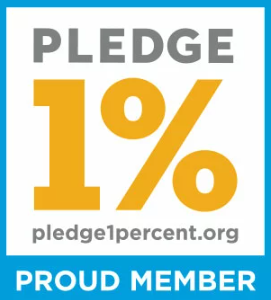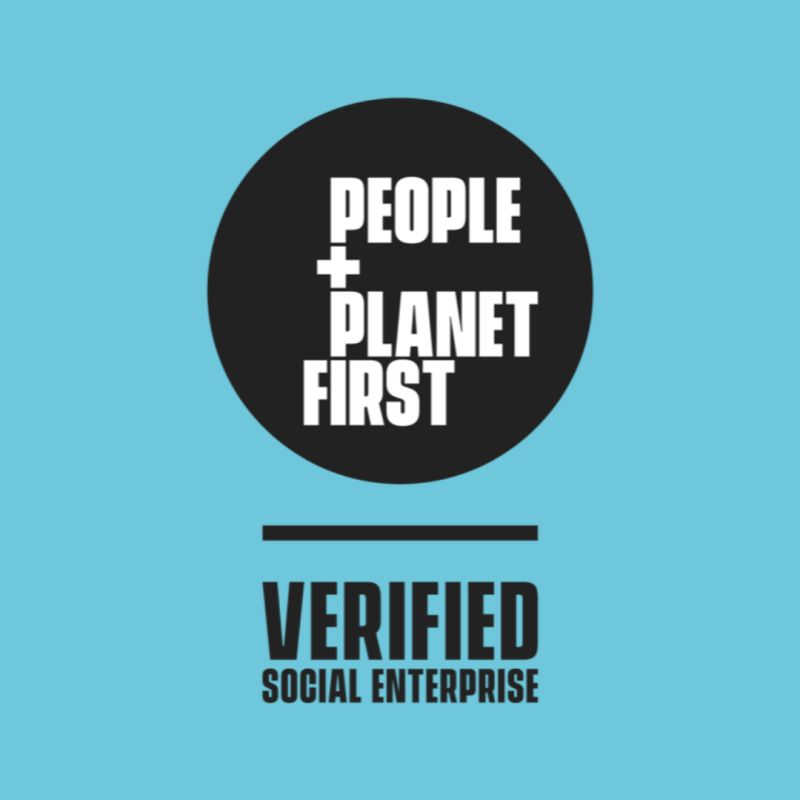
Business leaders have many challenges right now, including dealing with uncertainty, keeping and growing their businesses, keeping up with sales, and retaining jobs. The global pandemic pushed many companies to their limits and inevitably changed business dynamics–creating much disruption in our personal and business lives.
The continued safety measures made remote working and remote learning the new normal. But now more than ever, we have so much uncertainty and stress to deal with.
Parents are trying to raise and homeschool their children while working a full-time job and taking care of their households. I am not an exception—I have a nine years old, and we started school in the last couple of weeks. That’s how I found so many parallels between being a homeschool parent and teacher while running a full-time business. Here are the three critical assets that I think any business leaders should adapt:
The continued safety measures made remote working and remote learning the new normal. But now more than ever, we have so much uncertainty and stress to deal with.
Parents are trying to raise and homeschool their children while working a full-time job and taking care of their households. I am not an exception—I have a nine years old, and we started school in the last couple of weeks. That’s how I found so many parallels between being a homeschool parent and teacher while running a full-time business. Here are the three critical assets that I think any business leaders should adapt:
- Being agile
- Unlearning
- Storytelling
1) Being Agile

Agility means being flexible and adaptable. In the beginning of any new role in your business or personal life, you might not know what to do. The same applies to the pandemic. Once it started, no one knew what to do! This leveled the playing field whether you were a multi-million dollar business, a startup, or anything in between.
On top of that, with constantly changing variables, you cannot make assumptions when planning ahead. As frustrating as that may be, that’s where you have an opportunity to transform by approaching your business with a beginner’s mind. You are free to innovate rather than cling to past based approaches that no longer work in today’s business environment.
Consider the economic impact of the pandemic has already been made. It’s not that it’s coming, the impact is simply unfolding from what’s already happened. In other words, the next billion dollar companies have already taken off in this climate. We can accept the current reality and catch up or hope the past ways of doing business can return.
You can focus your thinking with the attitude of “what can I create from here?” “What is the opportunity I can take advantage of in this current reality and where we are now headed?”
Let’s take homeschool as an example. Our son was in public school, then he went to private, and now he’s homeschooling. When the pandemic hit, we were forced to homeschool, requiring us to be constantly agile with the changing circumstances.
With both of us remote working at home, there were times we all three needed to be on zoom. To accommodate sound barriers, at one point my husband in the bathroom for a conference call or on the balcony outside. We became agile with creating innovative working environments, by being flexible with our new schedules, creating new responsibilities in managing the house.
Every few days, we’d reflect on what was working or not. We’d be flexible on changing the daily rhythm of our schedule, then adapt from there. We couldn’t plan too far in advance without having tested what worked and iterating from there.
How do you stay agile while also planning ahead?
On top of that, with constantly changing variables, you cannot make assumptions when planning ahead. As frustrating as that may be, that’s where you have an opportunity to transform by approaching your business with a beginner’s mind. You are free to innovate rather than cling to past based approaches that no longer work in today’s business environment.
Consider the economic impact of the pandemic has already been made. It’s not that it’s coming, the impact is simply unfolding from what’s already happened. In other words, the next billion dollar companies have already taken off in this climate. We can accept the current reality and catch up or hope the past ways of doing business can return.
You can focus your thinking with the attitude of “what can I create from here?” “What is the opportunity I can take advantage of in this current reality and where we are now headed?”
Let’s take homeschool as an example. Our son was in public school, then he went to private, and now he’s homeschooling. When the pandemic hit, we were forced to homeschool, requiring us to be constantly agile with the changing circumstances.
With both of us remote working at home, there were times we all three needed to be on zoom. To accommodate sound barriers, at one point my husband in the bathroom for a conference call or on the balcony outside. We became agile with creating innovative working environments, by being flexible with our new schedules, creating new responsibilities in managing the house.
Every few days, we’d reflect on what was working or not. We’d be flexible on changing the daily rhythm of our schedule, then adapt from there. We couldn’t plan too far in advance without having tested what worked and iterating from there.
How do you stay agile while also planning ahead?
The Importance of Planning

In business, most of the clients I work with don’t have quarterly plans or business plans. Actually, they don’t have ANY plans. They are like, “let’s see what will happen” attitude. But a plan is your guide, your direction, your map. It’s a must-have for ANY business. If you don’t know where you are going, then even the smallest obstacle can result in a major disaster for you and your business.
Think of time as a spectrum. In the beginning, it is “let’s see what sticks.” The experimentation phase (that we all faced at the beginning of pandemics, within our businesses, our lives, and in homeschooling) has to happen. Then you start to see patterns settle. The variables begin to get smaller. With fewer variables, you can now start to plan further out.
Still, your planning should be adapted to the new reality and should be different from what was done pre-pandemic. You have to choose to plan and commit to that plan in a very rough time-frame and then adapt from there.
There is a constant battle of how much planning is too much, and you have to find that balance for yourself. The fastest way to find balance is by experimenting. Instead of sitting and thinking, “Is this too much?” “Is this too little?” –just do it! Just start planning, and as you go, you can correct your actions accordingly.
Companies with an agile culture can more easily embrace and adapt to change, can turn uncertainty into opportunity, and grow while other businesses fail. At its core, being agile is all about expecting and managing change. Change is inevitable, and being agile is a method for flowing with change, rather than resisting it.
Think of time as a spectrum. In the beginning, it is “let’s see what sticks.” The experimentation phase (that we all faced at the beginning of pandemics, within our businesses, our lives, and in homeschooling) has to happen. Then you start to see patterns settle. The variables begin to get smaller. With fewer variables, you can now start to plan further out.
Still, your planning should be adapted to the new reality and should be different from what was done pre-pandemic. You have to choose to plan and commit to that plan in a very rough time-frame and then adapt from there.
There is a constant battle of how much planning is too much, and you have to find that balance for yourself. The fastest way to find balance is by experimenting. Instead of sitting and thinking, “Is this too much?” “Is this too little?” –just do it! Just start planning, and as you go, you can correct your actions accordingly.
Companies with an agile culture can more easily embrace and adapt to change, can turn uncertainty into opportunity, and grow while other businesses fail. At its core, being agile is all about expecting and managing change. Change is inevitable, and being agile is a method for flowing with change, rather than resisting it.
2. Unlearning

The number two key asset that a business leader needs today is unlearning.
In home schooling, there are many unspoken rules like no school on weekends, a 5-7 hour school day, sitting down and working on memorizing knowledge you may or may not use later on, and so on.
The same thing applies to business. Unspoken norms are to work 40 hours a week, to sit down all day (if you have that type of business), work 8 hours in a row with just a lunch break, etc.
You must unlearn these norms to create what actually works. Notice when you act from what you should do versus what is doing right for you.
So, as far as unlearning, simply notice your patterns of thinking that restrict you. Now, is the perfect time in your business to see those patterns that limit you and release them.
As an art student, I remember drawing a wall, and the art teacher asked us what colors the bricks were, and we all agreed the bricks were red. But the teacher disagreed. And he made us look through a whole, and we were shocked- the bricks were not red but purple. Astonishing! The color was in front of us, but we couldn’t see the reality because of our pre-existing patterns and beliefs that we saw through.
The same applies to our lives and business. By unlearning pre-conceived rules of the business, you’ll begin to see innovative ways to serve clients and create new services right in front of you. Simply notice the pattern of your preconceptions that limit you. Once you’re aware of the unwanted behavior, you can release it and operate in a different world.
In home schooling, there are many unspoken rules like no school on weekends, a 5-7 hour school day, sitting down and working on memorizing knowledge you may or may not use later on, and so on.
The same thing applies to business. Unspoken norms are to work 40 hours a week, to sit down all day (if you have that type of business), work 8 hours in a row with just a lunch break, etc.
You must unlearn these norms to create what actually works. Notice when you act from what you should do versus what is doing right for you.
So, as far as unlearning, simply notice your patterns of thinking that restrict you. Now, is the perfect time in your business to see those patterns that limit you and release them.
As an art student, I remember drawing a wall, and the art teacher asked us what colors the bricks were, and we all agreed the bricks were red. But the teacher disagreed. And he made us look through a whole, and we were shocked- the bricks were not red but purple. Astonishing! The color was in front of us, but we couldn’t see the reality because of our pre-existing patterns and beliefs that we saw through.
The same applies to our lives and business. By unlearning pre-conceived rules of the business, you’ll begin to see innovative ways to serve clients and create new services right in front of you. Simply notice the pattern of your preconceptions that limit you. Once you’re aware of the unwanted behavior, you can release it and operate in a different world.
3. Storytelling

The third key asset business leaders need today is storytelling.
Let me give you an example. For homeschooling, if I tell my son: “Do your homework!” or “Come here, and finish this lesson now!” is he inspired to take the action? Unlikely! But if I start reading a story about the lesson, he naturally stops what he’s doing and listens attentively.
Research shows that messages delivered as stories can be up to 22 times more memorable than just facts.
Why is that? Consider storytelling engages all of our five senses. Stories help the brain relax as you are whisked away into another world.
Stories are easy to digest and remember when sharing other people. This increases customer referrals. Stories create more memorable marketing messages. It evokes not just the prefrontal cortex of the brain, but the limbic system or “feeling brain.”
Let me give you an example. For homeschooling, if I tell my son: “Do your homework!” or “Come here, and finish this lesson now!” is he inspired to take the action? Unlikely! But if I start reading a story about the lesson, he naturally stops what he’s doing and listens attentively.
Research shows that messages delivered as stories can be up to 22 times more memorable than just facts.
Why is that? Consider storytelling engages all of our five senses. Stories help the brain relax as you are whisked away into another world.
Stories are easy to digest and remember when sharing other people. This increases customer referrals. Stories create more memorable marketing messages. It evokes not just the prefrontal cortex of the brain, but the limbic system or “feeling brain.”
In Conclusion
So, to sum up, the three key assets that every business needs today are:
1) Being agile. Plan with flexibility and adaptability.
2) Unlearning. Pay attention to your patterns that impede your growth
3) Storytelling. Evoke all 5 senses to create a memorable experience people can share.
By utilizing these three critical assets for today’s business leader, you’ll better manage the tsunami of chaos by learning to surf the wave. You’ll unleash your brilliance to help others unleash theirs.
***
Anna S. Choi helps growing, six figure earning, over achieving, conscious business leaders–who are exhausted meeting the demands of their day–prevent burnout as they scale their impact. They want to build habits for staying happy, energized, and focused to perform at their optimum given the demands, complexities, and uncontrollable environments that suck up their energy. Learn more at www.annasunchoi.com.
If you are on a path of making a better version of yourself, you can also read other blog posts that I have published HERE. Or you can contact me, and I will be glad to talk to you and discuss how we can improve your situation.
Resources:
https://www.quantifiedcommunications.com/blog/storytelling-22-times-more-memorable
1) Being agile. Plan with flexibility and adaptability.
2) Unlearning. Pay attention to your patterns that impede your growth
3) Storytelling. Evoke all 5 senses to create a memorable experience people can share.
By utilizing these three critical assets for today’s business leader, you’ll better manage the tsunami of chaos by learning to surf the wave. You’ll unleash your brilliance to help others unleash theirs.
***
Anna S. Choi helps growing, six figure earning, over achieving, conscious business leaders–who are exhausted meeting the demands of their day–prevent burnout as they scale their impact. They want to build habits for staying happy, energized, and focused to perform at their optimum given the demands, complexities, and uncontrollable environments that suck up their energy. Learn more at www.annasunchoi.com.
If you are on a path of making a better version of yourself, you can also read other blog posts that I have published HERE. Or you can contact me, and I will be glad to talk to you and discuss how we can improve your situation.
Resources:
https://www.quantifiedcommunications.com/blog/storytelling-22-times-more-memorable






